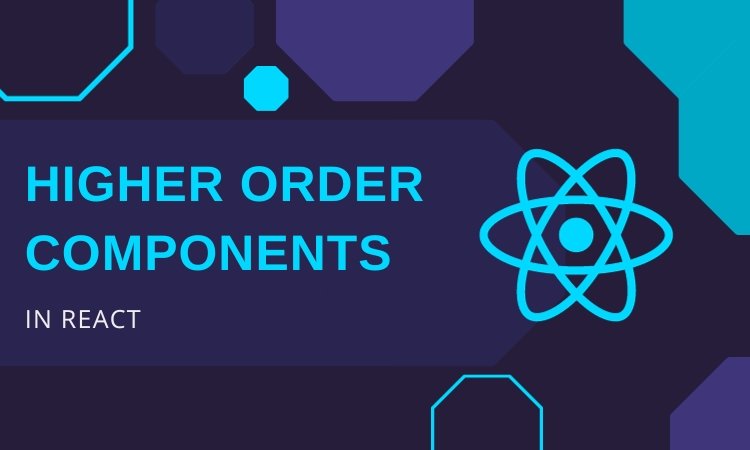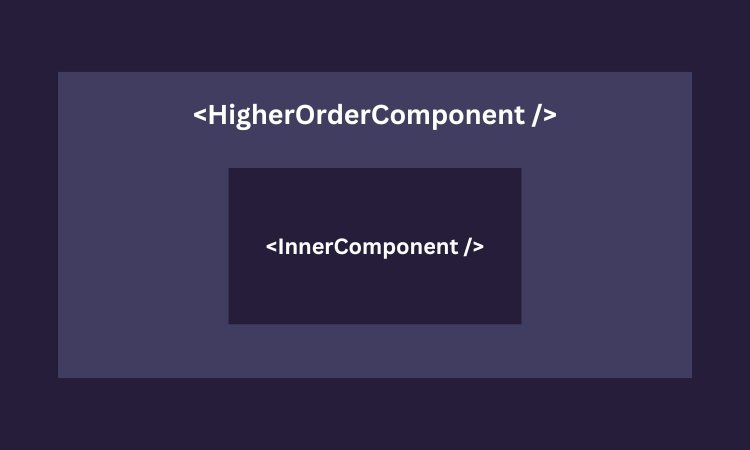Welcome to our comprehensive guide on understanding Higher Order Components (HOCs) in React. If you’re a React developer or enthusiast, you’ve likely encountered HOCs in your journey to mastering this popular JavaScript library. In this article, we will demystify Higher Order Components, break down their significance, and provide you with practical insights to harness their power effectively.
Contents
- What Are Higher Order Components?
- Getting Started with Higher Order Components
- Leveraging the Power of HOCs
- FAQs about Understanding Higher Order Components in React
- What is the key advantage of using Higher Order Components?
- Can I use multiple HOCs on a single component?
- Are there any downsides to using Higher Order Components?
- How do I pass props to a component enhanced by an HOC?
- Can HOCs be used with functional components in React?
- Are there any alternatives to Higher Order Components in React?
- Conclusion
What Are Higher Order Components?
Higher Order Components, often abbreviated as HOCs, are a powerful and flexible pattern in React that allows you to reuse component logic. In essence, HOCs are functions that take a component and return a new component with enhanced capabilities.
Why Use Higher Order Components?
HOCs serve multiple purposes in React development:
- Code Reusability: They enable you to encapsulate and reuse component logic across different parts of your application.
- Separation of Concerns: HOCs promote cleaner and more maintainable code by separating the rendering logic from other functionalities.
- Props Manipulation: They give you the ability to manipulate props before passing them to a component, allowing for dynamic behavior.
- Conditional Rendering: HOCs are excellent for conditionally rendering components based on specific criteria.
- Authentication and Authorization: You can use HOCs to handle user authentication and authorization, ensuring secure access to certain parts of your app.
Getting Started with Higher Order Components
To get a grasp of how Higher Order Components work, let’s start by creating a simple example. We’ll build an HOC that enhances a component with a loading spinner while data is being fetched from an API.
Implementing a Loading Higher Order Component
import React from 'react';
const withLoading = (WrappedComponent) => {
return class WithLoading extends React.Component {
render() {
const { isLoading, ...rest } = this.props;
return isLoading ? <div>Loading...</div> : <WrappedComponent {...rest} />;
}
};
};
In this example, we’ve created an withLoading HOC that takes a WrappedComponent as an argument. It renders a loading indicator when isLoading is true and the wrapped component otherwise.
// NavigationBarHOC.js
import React from 'react';
// Define a higher-order component (HOC) for a navigation bar
const withNavigationBar = (Component) => {
// Return a new component that includes the navigation bar
return function WithNavigationBar(props) {
return (
<div>
{/* Navigation Bar JSX */}
<nav>
<ul>
<li><a href="/">Home</a></li>
<li><a href="/about">About</a></li>
<li><a href="/contact">Contact</a></li>
</ul>
</nav>
{/* Render the wrapped component */}
<Component {...props} />
</div>
);
};
};
export default withNavigationBar;
To use this navigation bar HOC in your application:
// App.js
import React from 'react';
import withNavigationBar from './NavigationBarHOC'; // Import the HOC
// Your main application component
function App() {
return (
<div>
<h1>Welcome to My Website</h1>
<p>This is the main content of the website.</p>
</div>
);
}
// Wrap your App component with the navigation bar HOC
export default withNavigationBar(App);
Leveraging the Power of HOCs
Now that you’ve seen a basic HOC in action, let’s explore some more advanced use cases and best practices when working with Higher Order Components.
Combining Multiple HOCs
One of the strengths of HOCs is their composability. You can easily combine multiple HOCs to enhance a component’s functionality.
Caching Data with HOCs
Another useful application of HOCs is data caching. You can create an HOC that caches API responses, reducing unnecessary network requests and improving your app’s performance.
FAQs about Understanding Higher Order Components in React
What is the key advantage of using Higher Order Components?
The primary advantage of HOCs is code reusability. They allow you to encapsulate and reuse component logic, reducing duplication in your codebase.
Can I use multiple HOCs on a single component?
Absolutely! HOCs are highly composable. You can combine multiple HOCs to enhance a component’s functionality as needed.
Are there any downsides to using Higher Order Components?
While HOCs offer many benefits, overusing them can lead to complex component hierarchies. It’s essential to strike a balance between reusability and simplicity.
How do I pass props to a component enhanced by an HOC?
Any props passed to the HOC will be forwarded to the wrapped component automatically. You can also manipulate these props within the HOC if needed.
Can HOCs be used with functional components in React?
Yes, HOCs can be applied to both class and functional components, providing flexibility in your component architecture.
Are there any alternatives to Higher Order Components in React?
Yes, React hooks have become a popular alternative to HOCs in recent years. Hooks offer similar capabilities for reusing stateful logic in functional components.
Conclusion
In this comprehensive guide, we’ve explored Higher Order Components (HOCs) in React, understanding their importance, implementation, and best practices. HOCs are a valuable tool in your React development toolkit, enabling you to write cleaner, more maintainable code while promoting code reusability.
Remember, mastering HOCs takes practice, so don’t hesitate to experiment and apply them in your projects. As you become more proficient with Higher Order Components, you’ll find yourself building more efficient and maintainable React applications.






0 Comments